Rough ground not only offers the more consistent numbers of cod, but also a higher average size too. Fish between 4 and 8lbs are common. The cod can also become somewhat territorial and stay on the same general ground for weeks or months at a time while food sources remain, giving consistent fishing.
When to fish
The main season for rough ground cod is from October to March, with the period from October to late January the best. During February and March, the numbers of fish will rapidly reduce as they move offshore to spawn.
In the Northeast of England and around the Scottish coast, especially the eastern coast, there is a summer season roughly from June to September when cod are present on rough ground and off the rock scars. These fish are often known as Red Rock Cod, as they take on the colour of the kelp weed and rocks they live among.
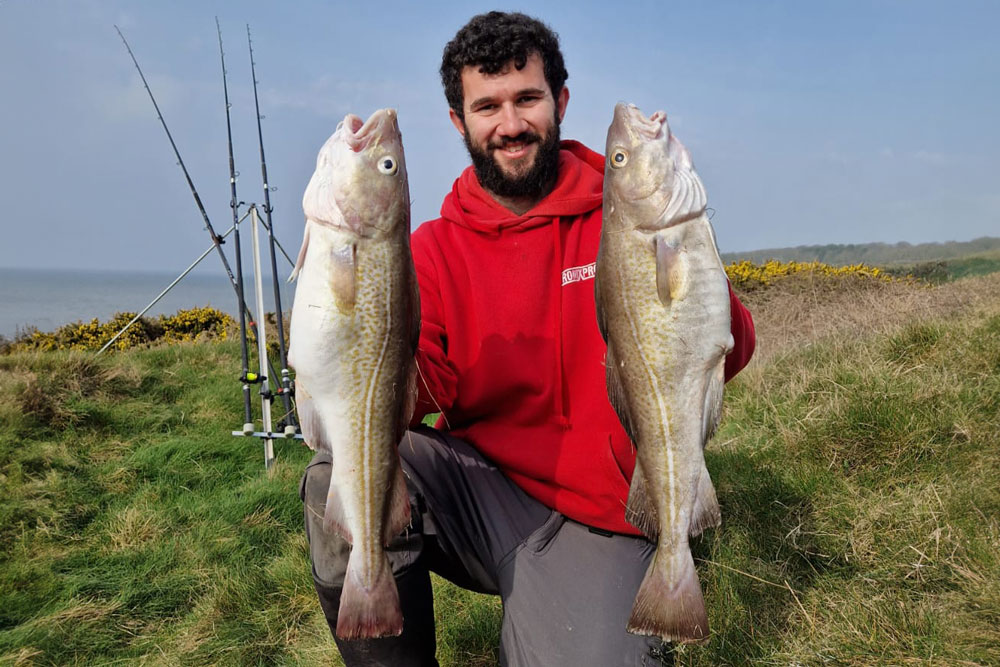
Where to fish
Cod seek out rougher ground beaches as they are full of small fish, crabs, and shellfish such as mussel. The uneven ground also provides indentations where food will wash into and hold, plus the cod can use the channels between bigger boulders to nose through, looking to scare up small fish and crab. It’s a natural food larder.
Rough ground can be small patches of boulders on surf beaches, but the best fishing is where the ground is all rocks and uneven, with small rocks scattered with bigger rocks the size of cars. The more varied the ground, the better it will fish.
The rock scars are a bit different. These will see you walk out along fingers of rocks that give into deeper gutters and channels, often filled with loose stones, kelp weed stalks and jagged rocks. In this situation, the cod will often be less than 50-yards out as the tide advances.
Weather and tides
Generally speaking, and within the bounds of personal safety, the rougher the sea the better as the cod will move in to capitalise on the food being washed free. A steady Force 3 to 6 onshore wind is good. Ideally, choose a sea that is still rough just after a gale has passed through, but when the wind has dropped or noticeably eased. Daylight might produce in a well coloured sea, but invariably the best fishing is during the hours of darkness.
On beaches, a flood tide tends to fish best. Especially the middle hours of the flood when the flow is strong. However, if there is rough ground from say the mid-tide area down to below the low water line, then ebbing tides can produce too. Choose the rising tides from three days before the peak spring tide and then the two days after the tides peak. These give the best overall chance, but fish will be caught outside these times.
Rock scars should be treated as individual venues. Some can be accessed on small neap tides and give good fishing as the water maybe deeper. But again, stick to the bigger tides as much as possible.
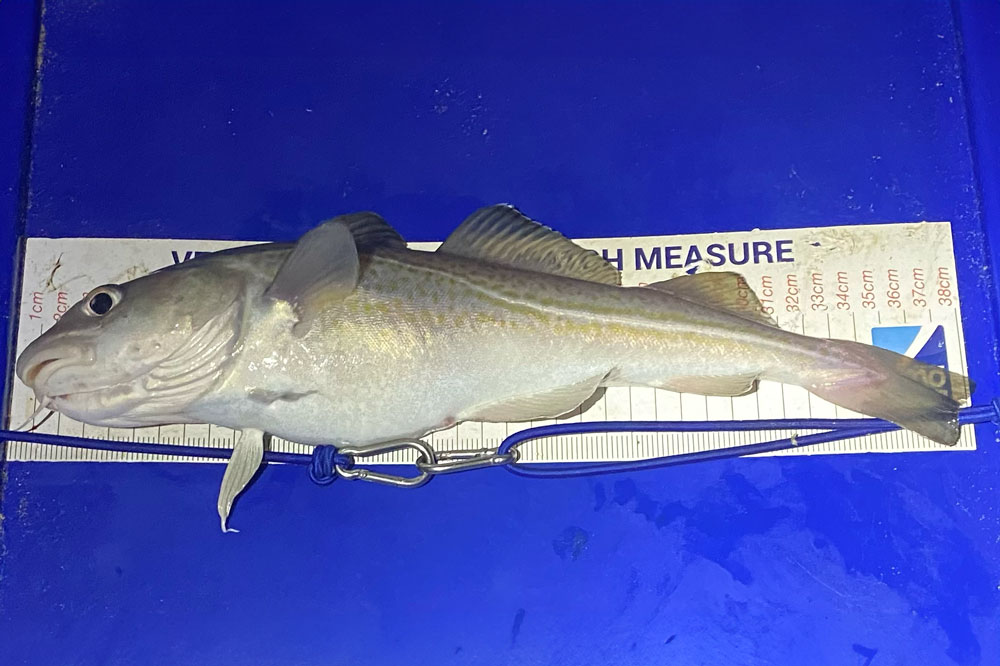
Tackle
Rough ground requires you to bully fish back through weed and rocks, so choose a 6-8oz beachcaster 13 to 15ft in length, such as the Tronixpro Xenon Power or Banzai Power. Match this to a tough multiplier reel or a large 8000 sized fixed spool reel. Load the multiplier with 25/30lb Blaze mono, and the fixed spool with 40/50lb Tronixpro X8 Power Braid. For casting, add a 60lb shock Xenon Leader to the mono, though many anglers will fish without a leader for close quarter casting with the heavy braid lines.
The best rig is a pulley rig. Begin with 50-inches of 60lb to 80lb Xenon Leader mono. To one end, tie on a Big Bait Casting Snap, slide on a 5mm bead, a Pulley Rig Bead and another 5mm bead. Measuring up from the tag end of mono 22-inches, tie in a figure-of-eight knot. This stops the beads and pulley rig bead sliding any further. On to the tag end of mono, slide on a rig crimp, a 3mm bead and an 8mm bead, then the hook. Crimp the crimp lightly in place on the mono, just enough that under heavy finger pressure you can slide it on the line. This bead arrangement acts as a bait stop and avoids the bait blowing back up the line during the cast.
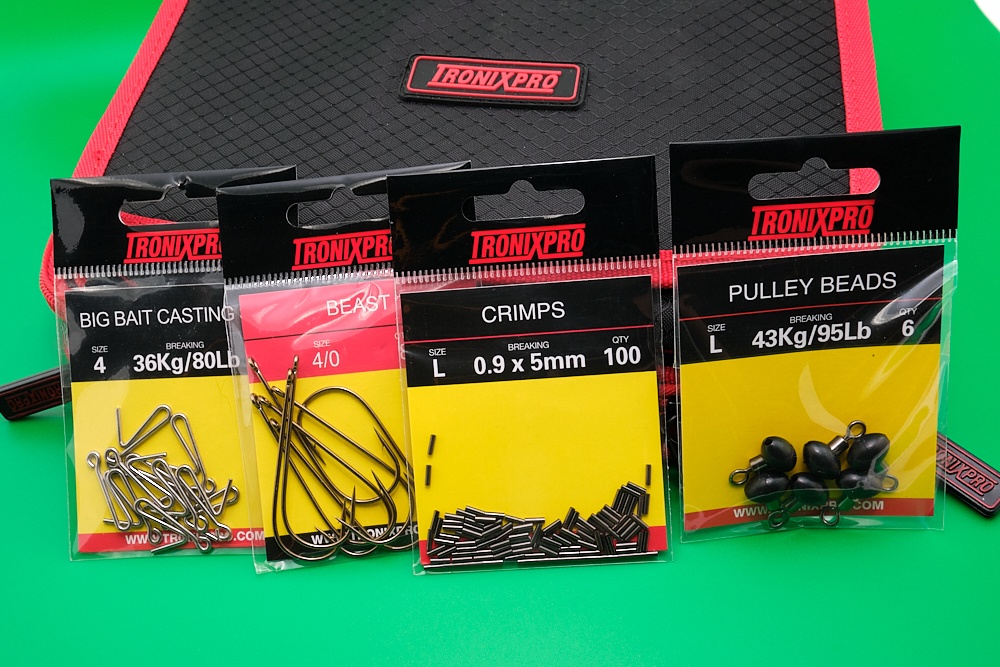
You can easily add a rotten bottom designed to lose the lead on this rig should the lead get snagged. Add another Big Bait Casting Snap Link upside down on to the Snap Link tied to the rig. To the eye of the inverted snap link, tie on a short 8-inch length of 20lb mono and then tie this to the eye of the lead. For casting, put the eye of the lead onto the upside down stand out tag end. This casts safely, but as the lead hits the sea the weight will fall free and be held only by the weak link of 20lb mono.
You can fish two hooks Pennel style, one above the other for bigger worm baits, but remember that two hooks are more likely to snag in the rocks than one. A single hook is just as effective when fishing crab or mussel baits. A size 4/0 is a good general size for Pennel rigs, but some anglers prefer a single 6/0 for larger crab and mussel baits. Tronixpro Beast Uptide, is an ideal hook.
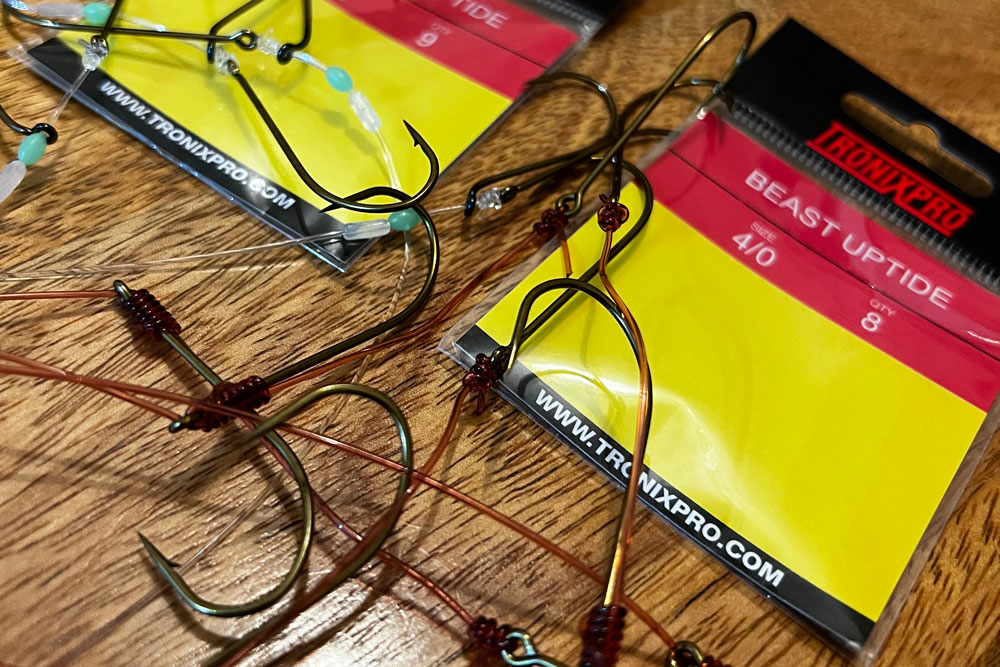
A good tip is to use release grip leads instead of plain leads. The plain leads can easily fall between cracks in the rocks and jam. This is less likely with the wired leads, as these sit over the cracks and don’t jam as often.
Baits
Lugworm will catch plenty of fish, especially black lug bait tipped with two or three blow lug. Alternatively, tip with ragworm. Mussel is a top bait, as is peeler crab. Other baits to try include whole squid, queen cockle, razorfish, and even Bluey.
Baits can be up to 8-inches in length, but to allow the cod to eat the bait easily, 6-inches is a plenty big enough bait and will ooze lots of good scent for a good 15 minutes or more.
Tactics
On open rough ground beaches, choose your area to fish by identifying where smaller rocks and boulders are mixed up with much bigger rocks. Also look for natural gutters and depressions where the tide leaves standing water at low tide. These will all hold food as the tide comes back in and will attract cod.
Only fish one rod when rough ground fishing and have the line as tight to the lead as you can to help to show instant bites. Cod over rough ground will give a mix of bites by either dragging the rod tip fully over and hooking themselves, or give a slack line bite as it pulls the lead free. Still strike into the fish as soon as you feel the weight of it. Once hooked, reel and lift the rod to gain line as fast as you can and keep the fish out of nearby snags. If a fish gets snagged, give it a few feet of free line, and this can often see it swim free.
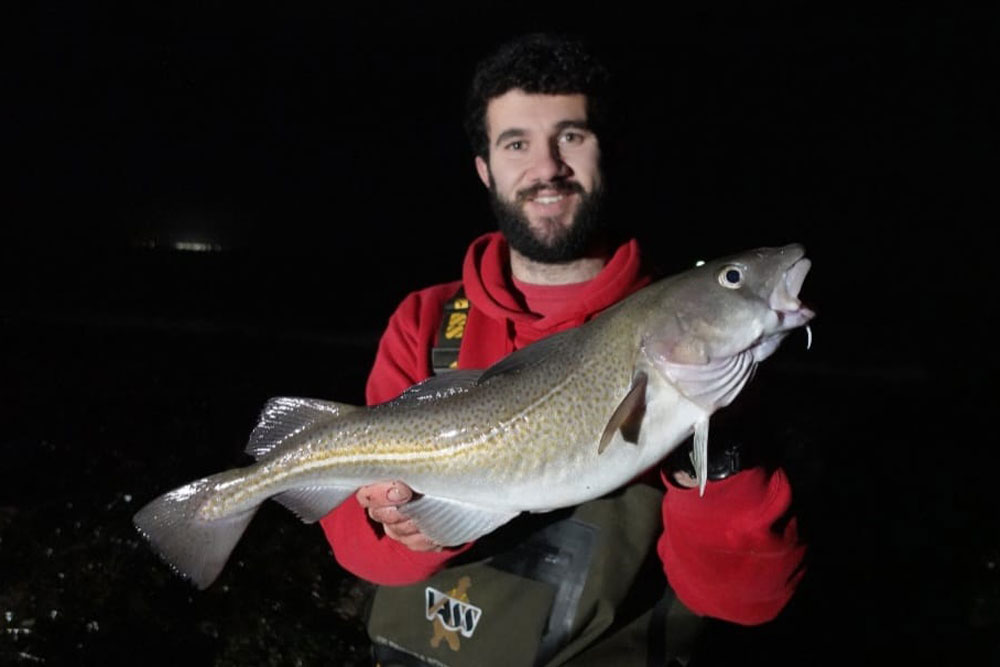
On rock scars, some anglers hold the rod nearly vertical in their dominant hand, but with the butt resting on their foot. This is a good way to get instant bite detection and reduces time lost when the rod is in a rest, and you’re relying on watching the rod tip for bites.
Good cod anglers will fish to their watch and change baits every 15 minutes. This guarantees a strong scent trail for the fish to follow up and is a big factor in increasing your bite ratio.
When rock scar fishing, over time, you’ll see that as the tide advances, one gutter or gully will produce a fish, then you’ll need to move and fish another spot. The fish rarely come through in numbers, but typically, they come through the channels and gutters one or two at a time. Be prepared to move to keep in contact with the fish.
When fishing at night and in rough weather, choose a bright-coloured leader, such as orange. This allows you to see exactly where fish are when close in front of you and almost ready for landing.


